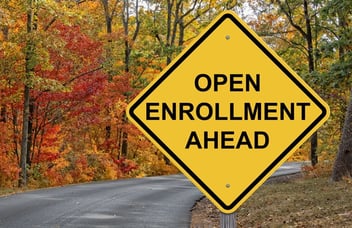How Customer Engagement Pros Can Impact Their Company's Employee Engagement
As engagement, loyalty, and customer success pros, we have a lot of tools to work with. Loyalty programs, incentives, gifts, rewards, content, data, and communication channels like email.
All those tools capture a little bit of real estate in the customer’s mind. They get people to take action, tugging them a bit closer to the brand (and hopefully the next purchase).
We've got all kinds of toys to pursue customer loyalty.
And yet, we're nearly powerless to influence perhaps what matters most to customers in the long run.
Our own companies and specifically, employees.
It’s true.
From branding to product to service and beyond, the customer experience comes directly and indirectly from employees. The executive suite all the way down to the lowest depths of the org chart.
Customer engagement follows employee engagement.
But don’t take our word for it. The data speaks for itself (data pulled from Access Perks’ employee engagement stats collection):
- Customer retention rates are 18% higher on average when employees are highly engaged (Cvent)
- Companies with engaged employees see 233% greater customer loyalty and a 26% greater annual increase in revenue (Aberdeen)
- Organizations that have over 50% employee engagement retain over 80% of their customers (Demand Metric)
- Organizations in which employees are primarily motivated by shared values and a commitment to a mission and purpose are nine times more likely to have high customer satisfaction (LRN)
- Highly engaged business units achieve a 10% increase in customer ratings and a 20% increase in sales (Gallup)
- Teams that address engagement needs in their everyday work outperform bottom teams by an average 20% in sales and 10% in customer engagement (Gallup)
- Highly engaged business units result in 21% greater profitability (Gallup)
It stinks. Your largest responsibility and your biggest asset is out of your hands.
As our own Emily Hayes says, everyone in an organization is responsible for customer relationships.
It belongs to Frank from accounting. Jules from building maintenance. Even that intern who gets waaay too close to your face during a conversation. They all get a say in the final product and experience placed in front of customers.
So What Can Loyalty Pros Do to Build a Customer-Centric Company Culture?
This isn’t easy. You don’t control salaries or benefits. You're not everyone’s direct manager (a.k.a. the person most responsible for an employee’s level of engagement).
That being said, you can get the conversation rolling by being the point person. You have the ability to see the end results of a more engaged customer base, after all.
Taking the lead on this movement requires a focus on three core motivators almost every employee follows: Responsibility, Results, and Recognition.
Keeping those in mind, here are three ways you can impact employee engagement to improve customer engagement.
- Integrate Customers into the Culture (Responsibility)
 Employees at all levels need to know they matter, and their work matters. It doesn’t matter what their job is, if they can see where it fits in the bigger picture they’re more likely to take it seriously.
Employees at all levels need to know they matter, and their work matters. It doesn’t matter what their job is, if they can see where it fits in the bigger picture they’re more likely to take it seriously.
Work with your HR department to integrate customer impact into job descriptions. Talk to managers about customer-related measures to track. It might even help to create a few customer personas with names and faces to share around so people can imagine specific customers in their minds.
Also, offer to meet with new employees during onboarding, where you can share knowledge about the people your company serves. Make it personal too, using specific examples of customers. That way Julie from Operations knows her work makes a difference, whether customers know it or not.
People who know they matter to someone other than their boss are more likely to take personal pride in their efforts. They’ll be motivated by more than staying on their boss’ good side.
- Share Success (Results)
Accomplishment, like responsibility, connects to an employee’s inner pride. This is where customer loyalty pros must become evangelists and share results with everyone involved.
According to a report from OC Tanner, 42% of employees believe their accomplishments go unnoticed. If people know what they’re doing is effective, they’ll take it more seriously.
Don’t let their good work go unnoticed. Make sure improvements and results are shared in every avenue possible, including company meetings, newsletters, intranet, annual reviews, and more.
As much as you can, celebrate specific people by name. Which brings us to the final point...
- Work from the Top Down (Recognition)
We’ve said before that recognition is like a secret weapon in the war for customer loyalty. People love it when someone notices what they’ve been up to.
The same principle applies to employees, maybe more dramatically. We’ve already said you should point out high performers, but what they’d really like is to hear from their bigwigs.
Nearly one-third of employees would rather be recognized in a company-wide email from an executive than receive a bonus of $500 (BambooHR)
People want to create results, and dangit, they want powerful people to notice.
Your work here starts at the top.
Help upper management recognize the value of investing in employee engagement and reducing churn. Speak in terms they understand, such as how engagement reduces risk and lowers costs while increasing customer spend and loyalty.
33% of senior leaders believe employee loyalty has a direct relationship to profits (American Management Association)
Just a third?! Hoo wee, there’s work to be done here!.
 As you get the big shots on board, work on those who report to them, the managers of your company. Make sure they understand why their department matters, and use specific measures when possible.
As you get the big shots on board, work on those who report to them, the managers of your company. Make sure they understand why their department matters, and use specific measures when possible.
Everyone cares what their boss thinks, whether it’s a CEO reporting to a board or an intern reporting to a coordinator. Working from the top down, the importance of engagement and focusing on customer metrics will snake through an organization’s DNA.
You know what customers want and who they are. Share that with every manager in your company, and how their team’s work impacts the customer experience.
Playing the Long Game
Working with HR? Measuring employee engagement? Speaking to new hires during orientation?
We know what you’re thinking. This is a whole lotta work that may take some time to pay off.
You’ve got customers to work with today, right now.
This is the long-term play. Once you can help develop a culture of employee engagement built around customer needs, it’ll build upon itself. Customers will want to be part of the brand, much like Zappos, Starbucks, and Harley Davidson - beloved brands that don’t have the superior product.
You’re the one tasked with overseeing the customer experience. From product to brand to followup and everything else, that experience is set by the people in your company.
Consider it one of your responsibilities, and one that will pay off for years - maybe decades - to come.
Topics: Customer Engagement
Written by: Brandon Carter





.jpeg)







Share your Comment.